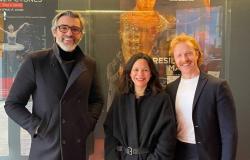1. A very precise definition
According to what the study understands, an architect’s house is a “house designed by an architect with the intention of making it his personal residence.” This may be an architect or, before 1939, a person recognized as such. Their production can be a new house or a significant building transformation. While the study excludes investment properties, it includes homes where the architects may never have lived due to changes in their financial or personal circumstances. But, overall, the duration of occupation of a house by its architect is “normal”: an average of around twenty years, up to 61 years for the panel studied. Most architects, in fact, designed their house between the ages of 25 and 35, but many did not do so until their late forties; which pushes the average age at which they designed their own residence to 36 years old.
The Métropole is reborn and marks a strong comeback for five-star hotels in Brussels: “The Belgian capital is becoming a trendy destination”
In order to best understand “the diversity and complexity inherent in the Brussels architectural landscape”the researchers broadened the field of study by encompassing not only “emblematic and archetypal cases but also lesser-known, seemingly ordinary examples, whose heritage value is less obvious.” Either “well-documented gems and others lesser known.” Which gives the flavor and originality of the study (read the interview with Stephanie Van de Voorde, opposite).
“It is an excellent opportunity for them to develop their activities, either by attracting new clients for individual orders or by directly participating in urbanization as architect-entrepreneurs.”
2. Chronological location: ever more on the outskirts
Unsurprisingly, the first architect houses recorded are located in the heart of the capital, in the Pentagon, the surrounding area still being rural villages at the time. Over time, they followed the urbanization movement of the suburbs. “In 1888, Hyppolite Jaumot was the first to register his personal house outside the Pentagon, in Schaerbeek. The first to respond to the spectacular demographic growth of the capital stimulated by the second industrial revolution.” Others will follow. “It is an excellent opportunity for them to develop their activities, either by attracting new clients for individual orders or by directly participating in urbanization as architect-entrepreneurs.” Enough to highlight the popularity of certain districts: the Squares district and the area around Avenue Louise at the end of the 19th century; the southern parts of Uccle and the northern parts of Laeken, “quiet peri-urban areas” from the 1920s; and, for the more adventurous, the less urbanized areas and offering larger plots of land, Uccle north and Watermael-Boitsfort. From the 1960s, architects moved more and more to the outskirts, towards Linkebeek, Rhode-Saint-Genèse or Tervueren, and left the field of study.
3. Unusual plots for unconventional configurations
In Brussels, the majority of plots are rectangular with a frontage of five to seven meters. However, this is not the land on which many architects (more than 20% of the panel) will build their house. Question of financial accessibility, but also of “challenge” and desire to show their creativity and their craft. Here it is a triangular terrain; there, of an irregular plot or one encumbered with strange prescriptions such as the imposition of a… blind rear façade.
4. Architectural workshop or office: teleworking before its time
Who says architect’s house also says office. Almost all architects have, at some point in their career, integrated their professional activity into their home. At least, from 1900, a room in which to work in the evenings and weekends. More often, an official office in which to work and receive clients, on the ground floor of the house or in an adjoining building. But, in more than 70% of the cases identified with plans, it involved “more spacious offices, shared with colleagues”with drawing room, archives, models, even waiting room. “With or without a separate entrance, often occupying half to one and a half floors of the house.”
In Cinquantenaire, apartments at 4,000 euros/m² and houses at 3,800 euros/m², but also slightly lower prices
5. Architects often get ahead of trends
The conclusions of the study highlight the innovative nature of architects. Their houses are indeed significant in their choice of location or location “requiring ingenious articulation”, in the integration of living and working spaces, in the materials or even in the contribution of their professional network, elements analyzed in the study but not presented in the Brussels Studies article. And this, although the researchers combined emblematic houses and seemingly ordinary houses.
3 questions to Stephanie Van de Voorde, engineer-architect, professor at VUB
1. How does Linsy Raaffels’ study that you supervised seem original to you?
Firstly because it is unprecedented: nothing comparable had been done in Brussels. Then because from the first explorations, it appeared that many architects, known and unknown, had created very interesting houses, in new, even avant-garde locations, on complex, difficult plots. Thirdly, I would say that the study is original because behind the figures, there are real stories. Like that of Victor Taelemans who, over a fairly short period at the turn of the century, created no less than five houses in which he lived! Or that of Victor Horta who, at the turn of the century, built, with his first own house, one of the masterpieces of Art Nouveau (now the Horta Museum), but who, in 1919 , acquired and renovated a neoclassical residence on Avenue Louise, in the Art Deco style.
2. Did certain findings surprise you?
Let’s say that compared to other similar studies carried out abroad, this one clearly highlights the specificities of its market, Brussels in this case. At the end of the 19th century, Brussels was characterized by strong demographic growth and therefore a great need for housing. Many architects saw this as an opportunity to attract new clients by using their own home as a business card. They often settled in new urban development zones, such as the Squares district for example, where 28 architect-designed houses were built in barely ten years.
3. Could this study have a sequel?
Many subjects deserve in-depth attention such as the dynamism and expertise of the networks of craftsmen, artists and entrepreneurs surrounding architects, stimulating them, encouraging them to innovate; or the importance and place of a personal house in the work of an architect; or the relationship between places of work and place of residence; or the materials used. In this regard, a striking example is given by the architect Volckrick. For his office, he chose unique materials such as asphalt for the floor and phragmite (common reeds, Editor’s note) for the ceiling. This unique use is one of the reasons which justified the protection of his house. This is a case that I particularly like and which I have since integrated into my lessons. It must be said that there are only a few protected post-war houses in Brussels, signed by Jacques Dupuis or Willy Van Der Meeren, and therefore now, Volckrick.






